Flossenbürg (Germany)
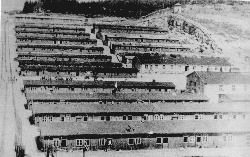
General view of Flossenbürg, April 23th, 1945, the day of its liberation.

General view of Flossenbürg, April 23th, 1945, the day of its liberation.
Location: Germany, near Bayreuth Established on: 1938 Liberation: April 23th, 1945, by the 2nd U.S. Cavalry. Estimated number of victims: 73,000 Sub-camps: 93 sub-camps and external kommandos (click here for a list of those sub-camps)
After Dachau, Buchenwald and Sachsenhausen, Flossenbürg was the fourth concentration camp established in Germany by the Nazis. It was in a small village located in a beautiful area, with many forests and mountains, not far from Weiden. This location was chosen by Himmler in May 1938.
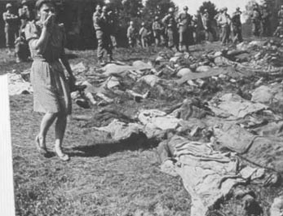
German civilians forced to visit the concentration camp of Flossenburg.
The first prisoners arrived in Flossenbürg during Spring 1938. On September 1, 1939, while the German Army was invading Poland, the concentration camp of Dachau was partially evacuated in order to be used as a training center for the future SS extermination squads. 981 prisoners from Dachau were transferred to Flossenbürg. Due to the increasing number of prisoners, the camp was constantly being transformed, and on April 5, 1940, the first convoy of foreign prisoners arrived in Flossenbürg.
Living conditions in Flossenbürg were extremely hard. The SS administration itself considered Flossenbürg as a "Hard Regime" concentration camp. Most of the prisoners had to work in the stone quarries. The malnutrition, the total lack of hygiene and medical care, and the brutality of the SS guards were the main causes of the death of thousands of prisoners in Flossenbürg as well as in its sub-camps.
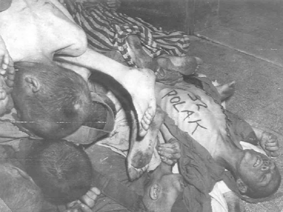
The SS wrote a last insult on the chest of a victim: "polak" (insult used by the SS for the Polish prisoners)
The prisoners in Flossenbürg were housed in 16 huge wooden barracks. The camp also had a kitchen, an infirmary ("Revier"), a laundry, and a disinfecting house. There were crematories and an execution place located just beside the crematories for "practical reasons" – (dixit) according to the SS. The whole camp was surrounded by an electrified barbed wire fence and watch towers. Two of those watch towers still remain today.
The original camp was established in 1938 for 1,600 prisoners. Some months later, the camp was transformed in order to house 3,000 prisoners. Eventually, more than 111,000 prisoners were incarcerated in Flossenbürg and its sub-camps - 95,400 men and 16,000 women. It is estimated that 73,000 prisoners died.
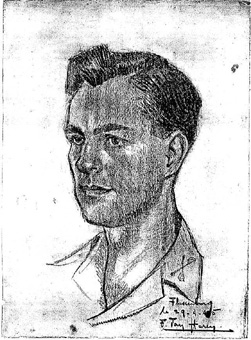
Portrait of Albert A. Salt, officer in the 2nd Calvary and liberator of Flossenbürg.
The portrait is signed "Flossenbürg, April 29th, 1945, F. Van Horen".
Please read the testimony of F. Van Horen, Belgian survivor of Esterwegen and
Flossenbürg concentration camps: "How a Drawing Saved my Life".
(Many thanks to Alger A. Salt for allowing us to place this portrait on this site.)
The camp was liberated on April 23, 1945 by the 2nd U.S. Calvary. There were only some hundreds of ill and weak prisoners left. The other prisoners--more than 14,000 men and women--were forced by the SS to leave the camp in a Death March some days before the Allied troops arrived. Three days after the liberation of the main camp, a U.S. unit retrieved the survivors of this Death March. All of them were in pitiful condition, and in only three days, more than 4,000 prisoners died of weakness or starvation, or killed by the SS.
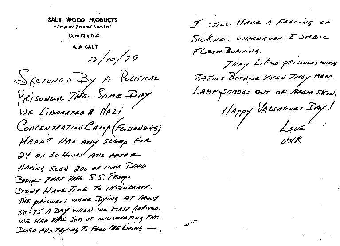
Note sent by Albert A. Salt to his niece.
The note contains a brief description of the portrait (see previous image):
"2/10/79 Sketched by a political prisoner the same day we liberated a Nazi concentration camp (Flossenbürg). Hadn't had any sleep for 24 or 30 hours and after having seen 200 or more dead bodies that the S.S. troops didn't have time to incinerate. The prisoners were dying at about 50 - 75 a day when we first arrived. We had the job of incinerating the dead and trying to feed the living. I still have a feeling of sickness whenever I smell flesh burning. They [the SS] liked prisoners with tattoos because they made lampshades out of their skin.
Happy Valentines Day!
Unk"